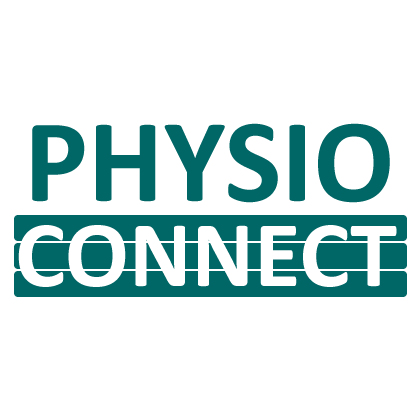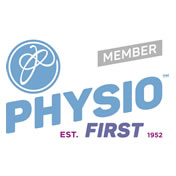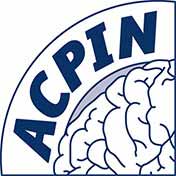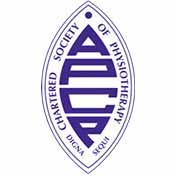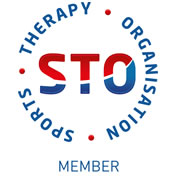Tennis elbow
This is an umbrella term used to describe any problem or injury to the common extensor tendon of the forearm where it attaches onto the outer side of the elbow joint. The common extensor tendon muscles are responsible for producing wrist and finger extension, movements that are involved in certain racquet strokes in sport (hence the name tennis elbow) and activities such as typing, gripping and lifting loads. When repetitively used, this tendon complex can become irritated, leading to inflammation and tendinopathy. It is essentially what is termed a 'repetitive strain injury', which is then prolonged by the changes that take place in the fibre alignment and makeup of the tendon once strain is placed upon it. This then in turn responds abnormally to (normal) loads and tension, which means that the condition can easily become chronic and never fully settle unless the tendon is addressed with appropriate management at an early stage.
 Management consists of rest, ice, anti-inflammatories (as appropriate) and physiotherapy, working to restore normal movement and tendon response to loading, through specific stretches and rehabilitation exercises. Eccentric training is commonly used as part of the rehabilitation process along with soft tissue mobilisation as necessary. Acupuncture may also be helpful in settling pain and local inflammation.
Management consists of rest, ice, anti-inflammatories (as appropriate) and physiotherapy, working to restore normal movement and tendon response to loading, through specific stretches and rehabilitation exercises. Eccentric training is commonly used as part of the rehabilitation process along with soft tissue mobilisation as necessary. Acupuncture may also be helpful in settling pain and local inflammation.
Chronic cases of tennis elbow may benefit from a steroid injection or, in the most severe cases, surgical intervention.
Golfers elbow
This term is used to encompass any problem involving the common flexor tendon of the forearm, with pain usually arising around its attachment to the inner side of the elbow joint. The common flexor tendon muscles produce flexion of the fingers, thumb and wrist, enabling an individual to grip, squeeze objects in the hand and perform repetitive functional activities such as using scissors, chopping with a knife, gardening and using tools such as screwdrivers etc. Sports that involve high-velocity wrist flexion such as golf and prolonged/repetitive finger flexion as required in cycling, can also lead to developing this tendinopathy.
As with tennis elbow, effective management requires a period of rest, ice, anti-inflammatories (if appropriate). Physiotherapy can then address any issues with muscle strength/length, and tendon fibre response to loading. Soft tissue mobilisation to the affected area may be required, and acupuncture may also help to settle the symptoms.
Repetitive strain injury (RSI)
Both conditions above can be viewed as repetitive strain disorders. In general, repetitive strain can occur within any muscle and/or tendon of the body, but is commonly seen within the upper limb due to the demands that are placed on the upper limbs during everyday life. It is often the smaller tendons that tend to be overused for demanding and repetitive tasks, and sometimes they are unable to cope with the level of activity expected from them. Our thumbs, fingers and wrists are constantly tested through activities involved in DIY, hobbies such as sewing, drawing, and playing musical instruments. Professional musicians can be plagued by such injuries, as the demands placed on the small muscles of their hands and forearms are huge, often for several hours every day.
Repetitive strain can also present as a by-product of work-related activities. In such circumstances, these injuries are termed 'work-related upper limb disorders'. Work activities causing such problems may include painting, plastering, cleaning, kitchen work, typing and floristry.
In addition to local pain coming directly from the overused tendon, individuals may report burning sensations, sensitivity to temperature, pins and needles and stiffness from the affected area of the limb upon movement. Once present, the pain can be debilitating, preventing further use of the limb and severely affecting function. As the initial management phase involves rest, individuals often find these injuries particularly tricky to address correctly, due to pressing demands at work, and the importance of having to continue the very task that has caused the injury to arise in the first place.
However, it is essential that these problems are managed appropriately, and promptly. Once chronic, RSI can lead to long-term tendon changes and high irritability of the tendon when performing even basic tasks.
Physiotherapy intervention can help to settle and fully manage these types of injuries. Pain can be controlled through soft tissue work, acupuncture and advice regarding relative rest, pacing of activities and the use of splints as appropriate. Rehabilitation of the affected tendons and their associated soft tissues can also be addressed with suitable exercises, stretches and a long-term self-management programme.
Carpal tunnel syndrome
The carpal tunnel is an anatomical passageway through which 9 flexor tendons and the median nerve pass, supplying sensation and movement to a large part of the palm of the hand, thumb and fingers. Problems in this area can develop when pressure increases on the flexor tendons and median nerve through the tunnel, leading to inflammation, swelling and altered sensation.
The most common cause of carpal tunnel syndrome is as a result of overuse of the flexor tendons, alongside relatively weaker and longer opposing extensor and/or abductor muscles of the forearm and hand (for example jobs that require the repeated use of the hands, or activities such as playing the violin or guitar). This in turn may lead to inflammation and swelling of the flexor tendons within the tunnel, which causes compression of the median nerve, and reduced muscle support of the carpal bones, causing them to effectively collapse and reduce the space within the tunnel.
Some women may also be prone to developing carpal tunnel symptoms during pregnancy, due to increased water retention and subsequent carpal tunnel compression. This condition normally resolves naturally once the baby has been born.
The most effective management of symptoms is through relative rest, anti-inflammatories (as appropriate), and a course of physiotherapy intervention to address the associated muscle imbalance. This is likely to involve a programme of stretching exercises to effectively lengthen the tight/overactive flexor muscles and strengthening exercises to recruit the extensor muscles correctly. In doing so, muscle balance can be restored, which stabilises the carpal bones and maintains the integrity of the carpal tunnel.
It is worth mentioning here that as the median nerve originates from specific levels of the neck, symptoms involving this nerve may indicate a nerve root irritation from the cervical spine, and not simply point to carpal tunnel syndrome locally at the wrist. As such, your physiotherapist should always consider assessment of your neck when investigating 'carpal tunnel' symptoms, in case treatment needs to be directed towards the cervical spine, at the source of the nerve root. On occasion, both areas may need to be treated simultaneously, a condition known as 'double crush syndrome'.
De Quervains syndrome
This is a condition which causes pain and swelling from the tendons along the thumb side of the wrist that act to extend and abduct the thumb (move it away from the palm). Pain is generally reported over the lower portion of the forearm (towards the wrist), and over the base of the thumb, resulting from inflammation and swelling, which causes the tendons to rub within their tendon sheaths. Pain may be felt when using the thumb, bringing it across the palm which places the tendons on stretch, and lifting and gripping loads in certain hand positions, for example when lifting a baby / child. 'Creaking' of the tendon over the lower forearm and a 'snapping' sensation when moving the thumb may also be reported.
The cause of the syndrome is largely unknown, however repetitive use, anatomical bony anomalies at the radius, pregnancy, and inflammatory arthritis (such as rheumatoid arthritis) have all been cited as factors that may be responsible.
Management is very much along the same lines as repetitive strain injuries in terms of a period of rest and anti-inflammatories (as appropriate), the use of splints and, in some cases, a steroid injection. Physiotherapy can help with advice regarding use of the hand, relative rest and pacing of activities and may use soft tissue techniques can help to relieve both the pain and the tendon rubbing. Acupuncture may also be useful in providing pain relief and settling inflammation.
Handlebar palsy – see our cycling injuries section.


